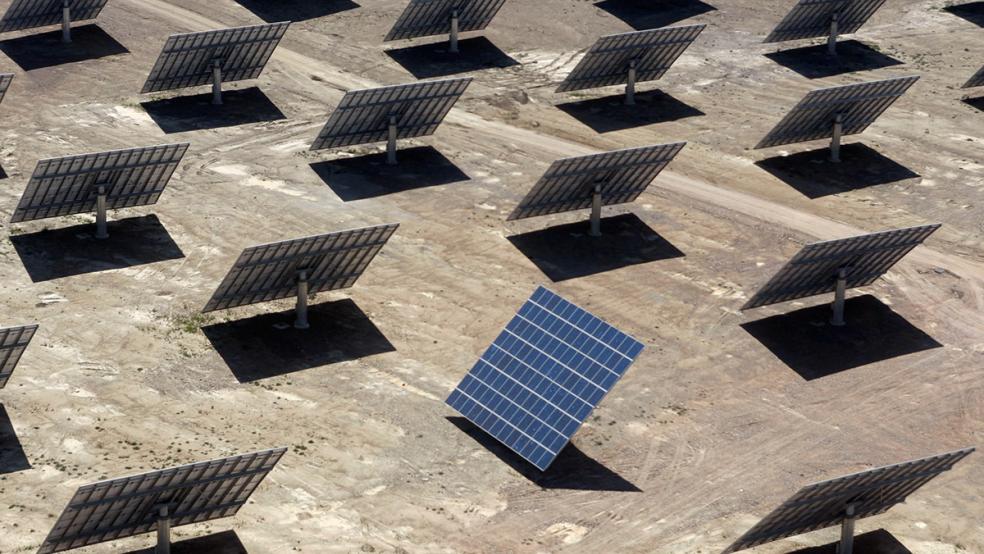It is the dawn of a new era and the oil and gas industry is chomping at the bit as the most industry-friendly administration in recent memory comes to power. But even as the regulatory environment for oil and gas drilling is about to get a lot easier, the inroads of clean energy and the steady pace of innovation in emerging technologies will continue.
In fact, in addition to the uncertainty surrounding the Trump administration, global threats to clean energy abound, including rising interest rates, economic weakness in China, and political risk in Europe. Still, these trends probably won’t “cause a clean energy shipwreck in 2017,” according to Bloomberg New Energy Finance, which predicts the clean energy sector will “sail on.”
Related: Nuclear Power Could Boom Under President Trump
And for good reason. In many parts of the world renewable energy has achieved escape velocity, reaching grid competitiveness with fossil fuels in many parts of the world. BNEF cites a wind project in Morocco that has an unsubsidized price of $30 per megawatt-hour and a solar project in Chile that generates electricity for $29.10/MWh. “These must be the lowest electricity prices, for any new project, of any technology, anywhere in the world, ever,” BNEF writes in its “10 Predictions for 2017.”
As renewables continue to carve out a larger share of electricity markets, the rules of the game are going to change. Low-cost wind and solar could transform electricity markets to a “base-cost renewables” structure, BNEF says. Instead of base-load electricity coming from coal, hydro, natural gas and nuclear, plus peak electricity from gas-fired peaker plants, the “base-cost renewables” model will see cheap renewables first, with the remainder to be filled with “flexible capacity from demand response, storage and gas, and then importing the remaining needs from neighbouring grids.”
That will present some serious regulatory challenges and market pricing problems, but BNEF says that is the direction electricity markets are heading. The significance is hard to overstate – renewables are becoming the first choice for a new generation, with gas filling in the gaps. Bad news for the hulking coal and nuclear power plants of yesteryear, which will have increasingly slimmer odds of getting built.
But all is not rosy for clean energy. Global investment in the clean energy sector fell 18 percent in 2016 to $287.5 billion. Much of that had to do with a sharp slowdown in Chinese demand for solar and wind, causing prices to fall as a glut of supply emerged. Clean energy installations disappointed in China, Japan, Europe, Brazil and India, putting a dent in the total investment figures. On the other hand, cheaper prices can be a good thing. BNEF forecasts solar systems will see costs fall by another 10 percent this year. And even as investment fell, total capacity installations did not, reflecting ongoing improvement in cost reductions.
Related: Why Trump Could Be Good for Renewable Energy
BNEF has a few more eye-opening predictions for the broader energy sector in 2017:
• Costs for batteries will fall 15 percent this year, after declining 70 percent over the past five years. That should allow energy storage to exceed 1 GW of installations for the first time.
• Solar installations hit 75 GW, up from 70 GW in 2016. Growth comes from a wider selection of countries, including India, Pakistan, Turkey, Brazil, and an array of other countries in Africa, the Middle East and Latin America.
• Wind continues with robust installations of 59 GW, but sits in second place behind solar.
• Coal and oil prices fall. The former loses out because of cheaper competition from alternatives while an increase in oil supply, particularly from U.S. shale, will force prices down again.
• EVs could break above 1 million vehicles sold. Although still rising from a low base, EV sales are growing quickly.
• Corporations are turning to renewable energy at faster clip, and not just for good PR. Securing long-term power contracts at cheap prices is the main motivator.
• Global GDP expands, but carbon emissions do not. Increasing use of renewable energy and efficiency will ensure that 2017 is the third year in a row that emissions remain flat, deepening the decoupling between carbon emissions and economic growth already underway.
To be sure, President Trump could land some blows on renewable energy by scrapping incentives and removing barriers to oil and gas drilling. But he won’t be able to turn back the clock on the energy transition.
This article originally appeared on OilPrice.com. Read more from OilPrice.com:
OPEC Commitments Push Iraq Towards Oil Export Deal With Kurds
Oil Production Here Is Declining Faster Than Anywhere On Earth




